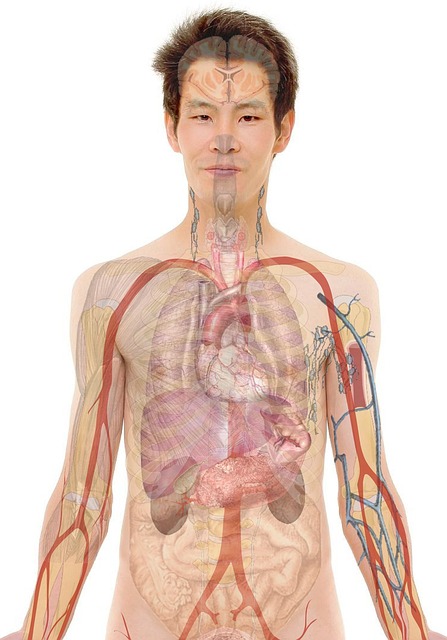Implementing a Schema for FAQs improves user experience and search engine visibility. It structures data for questions and answers, enhancing SERP rich snippets and click-through rates. By defining content accurately using JSON-LD, bounce rates decrease while time on site increases, leading to better website performance and SEO. Regular updates ensure optimal results.
“Boosting online visibility and user engagement is now as simple as implementing the FAQPage schema. This powerful markup allows your website to display rich, interactive FAQs directly in search engine results pages (SERPs), offering a dynamic experience to potential visitors. By structuring your content with this schema, you unlock a variety of benefits, from increased click-through rates to enhanced user interaction.
This comprehensive guide explores the ins and outs of FAQPage schema markup, covering everything from technical implementation to optimization strategies.”
- Understanding FAQPage Schema Markup
- Benefits of Implementing FAQ Schemas
- Optimizing Content for Rich FAQ Results
- Technical Aspects of Schema Implementation
- Enhancing User Experience with FAQs
- Measuring Success and Continuous Improvement
Understanding FAQPage Schema Markup

FAQPage schema markup is a structured data format designed to help search engines understand and display Frequently Asked Questions (FAQs) in rich, interactive results. By implementing this schema, websites can enhance user experience by providing quick access to answers without scrolling through lengthy content. This structured approach also boosts SERP real estate, making your site’s content more visible and click-worthy.
The FAQPage type includes various elements like questions, answers, and even accordions for better organization. When search engines crawl a webpage with this schema, they can extract the essential FAQ data, allowing them to feature it in special FAQ result blocks on search engine results pages (SERPs). This visual representation not only improves user engagement but also encourages more clicks, ultimately driving traffic to your site. Implement the Accordion Schema SEO technique for a dynamic and user-friendly experience, making your FAQs accessible and engaging.
Benefits of Implementing FAQ Schemas

Implementing a Schema for FAQs offers a multitude of advantages for website owners and content creators. By integrating this structured data, sites can significantly enhance their search engine visibility and user experience. When search engines crawl a webpage, they can easily interpret the FAQ schema, allowing them to extract vital information and display rich, enhanced snippets in the search results page (SERP). This means that when users query related terms, they are met with more informative answers directly within the search results, increasing click-through rates.
Moreover, FAQ Schemas facilitate FAQ Snippet Optimization, enabling websites to capture a larger portion of the SERP real estate. The structured format ensures that the most relevant and frequently asked questions are prominently displayed, providing users with quick access to solutions. This optimization not only boosts user engagement but also encourages longer browsing sessions, signaling to search engines that the website offers valuable content, thereby improving overall search rankings.
Optimizing Content for Rich FAQ Results

To optimize content for rich FAQ results, incorporating a Schema FAQPage type is essential. This schema provides search engines with the necessary structure and context to understand that your page contains frequently asked questions and their answers in an interactive format. By implementing this schema, you’re signaling to search engines that your content deserves special consideration within search results, enhancing visibility and click-through rates.
Using Accordion Schema SEO effectively can transform your FAQ section into a dynamic and engaging experience for users. This not only improves user engagement by making the process of finding answers quicker and more intuitive but also increases the amount of valuable content presented in the SERP, as rich FAQ results often take up more real estate than traditional listings. As a result, you can expect higher conversion rates and better overall performance for your website.
Technical Aspects of Schema Implementation

Implementing a Schema for FAQs involves several technical considerations to ensure its effective use in enhancing search visibility and user experience. The first step is integrating the FAQPage schema into your website’s existing markup, typically using JSON-LD (JavaScript Object Notation for Link Data). This code snippet is embedded within the HTML of each FAQ section, providing search engines with structured data about the content. Each question-answer pair is meticulously defined, allowing search algorithms to interpret and display rich FAQ results.
The technical process includes carefully structuring the schema to cover various aspects of FAQs, such as questions, answers, dates, and author information. By employing Accordion Schema SEO techniques, you can optimize the presentation of these structured data points. This involves tagging each question as an “item” within a “list” structure, enabling dynamic rendering. FAQ Snippet Optimization plays a crucial role in enhancing user engagement by ensuring that search results accurately represent the content, encouraging clicks and improving overall user satisfaction.
Enhancing User Experience with FAQs

Adding a Schema for FAQs significantly enhances the user experience by presenting information in an organized, structured manner. This is particularly beneficial for websites with extensive content or complex products/services. When users encounter a FAQ schema, they can quickly scan through questions and find relevant answers, reducing bounce rates and increasing time spent on-site. By implementing this schema, sites not only improve user engagement but also optimize their search engine visibility, making it easier for potential customers to discover them in SERPs.
The Schema FAQPage Type plays a crucial role in achieving Rich FAQ Results, showcasing questions and answers as interactive cards that can be easily scrolled through. This visual representation makes navigating through content more engaging and intuitive. To add the FAQ schema to your website, follow these simple steps: identify relevant FAQs, structure them according to the schema guidelines, and use markup language (like JSON-LD) to embed this data into your HTML.
Measuring Success and Continuous Improvement

Measuring the success of implementing a Schema for FAQs involves tracking key performance indicators (KPIs) such as click-through rates (CTRs) on your FAQ pages, which can significantly boost user engagement. By analyzing how users interact with your content, you can identify high-performing questions and optimize low-performing ones. The goal is to continuously improve the overall user experience, ensuring that your FAQs are not only informative but also seamlessly integrated into your website’s navigation.
Regularly reviewing and updating your Schema FAQPage Type can help maintain eligibility for rich FAQ results on search engine result pages (SERPs). As search algorithms evolve, so do user preferences and content trends. Staying current with best practices for How to Add FAQ Schema ensures that your site remains competitive, providing valuable insights to users while enhancing your website’s visibility in SERPs.
